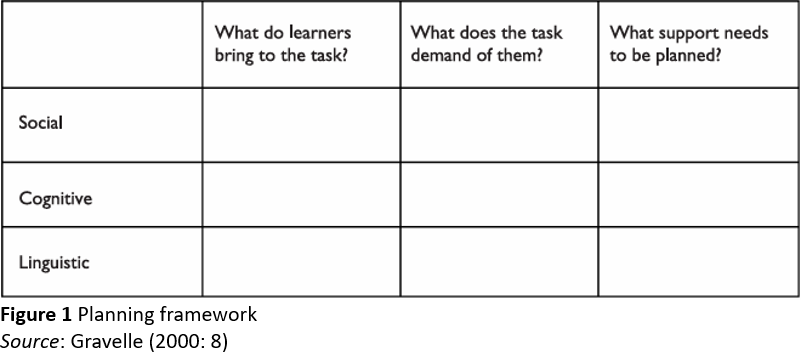


 Grammar
Grammar
 Tenses
Tenses
 Present
Present
 Past
Past
 Future
Future
 Parts Of Speech
Parts Of Speech
 Nouns
Nouns
 Verbs
Verbs
 Adverbs
Adverbs
 Adjectives
Adjectives
 Pronouns
Pronouns
 Pre Position
Pre Position
 Preposition by function
Preposition by function 
 Preposition by construction
Preposition by construction
 Conjunctions
Conjunctions
 Interjections
Interjections
 Grammar Rules
Grammar Rules
 Linguistics
Linguistics
 Semantics
Semantics
 Pragmatics
Pragmatics
 Reading Comprehension
Reading Comprehension|
Read More
Date: 2025-03-29
Date: 2025-03-25
Date: 2025-04-02
|
Planning for bilingual learners
Guidance in ways to support classroom practice for bilingual learners can be provided by the theories of second language acquisition. When thinking about planning for all learners, educators first of all think about what the learners already know and build on this knowledge, devising activities and tasks that enable them to develop. When planning for bilingual learners, educators need to think about what they can bring as individuals from their previous experiences to the task in great detail. This will include their social and cognitive understanding and their linguistic ability. Educators therefore need to have this information available to them and to have a good understanding of the individual learner’s culture, previous education and family circumstances.
Next, the demands of the task or activity, on the bilingual learners themselves, have to be considered. How a lesson is to be presented and how the tasks are to be completed, need to be made explicit to bilingual learners. An analysis of the language to be used within text will also enable the educator to ensure that support and engagement in the task are possible. This is, as mentioned earlier, where a good understanding of how a classroom functions, can support the demands of the curriculum, the social interactions and the linguistic development for these learners.
The level and type of support needed are also an important aspect of an educator’s planning. This may be supplied to the learners in many different ways, using the strengths of their peers, of effective grouping or additional adult intervention.

It may also involve using artefacts, videos or pictures to ensure access and engagement in the curriculum. Repetition, gesture, intonation and role-playing can all be used by educators to support cognitive and linguistic development.
The framework presented in Figure 1 is very simple, but can be used to ensure that accurate and appropriate planning is achieved for bilingual learners.
|
|
|
|
"إنقاص الوزن".. مشروب تقليدي قد يتفوق على حقن "أوزيمبيك"
|
|
|
|
|
|
|
الصين تحقق اختراقا بطائرة مسيرة مزودة بالذكاء الاصطناعي
|
|
|
|
|
|
|
قسم شؤون المعارف ووفد من جامعة البصرة يبحثان سبل تعزيز التعاون المشترك
|
|
|